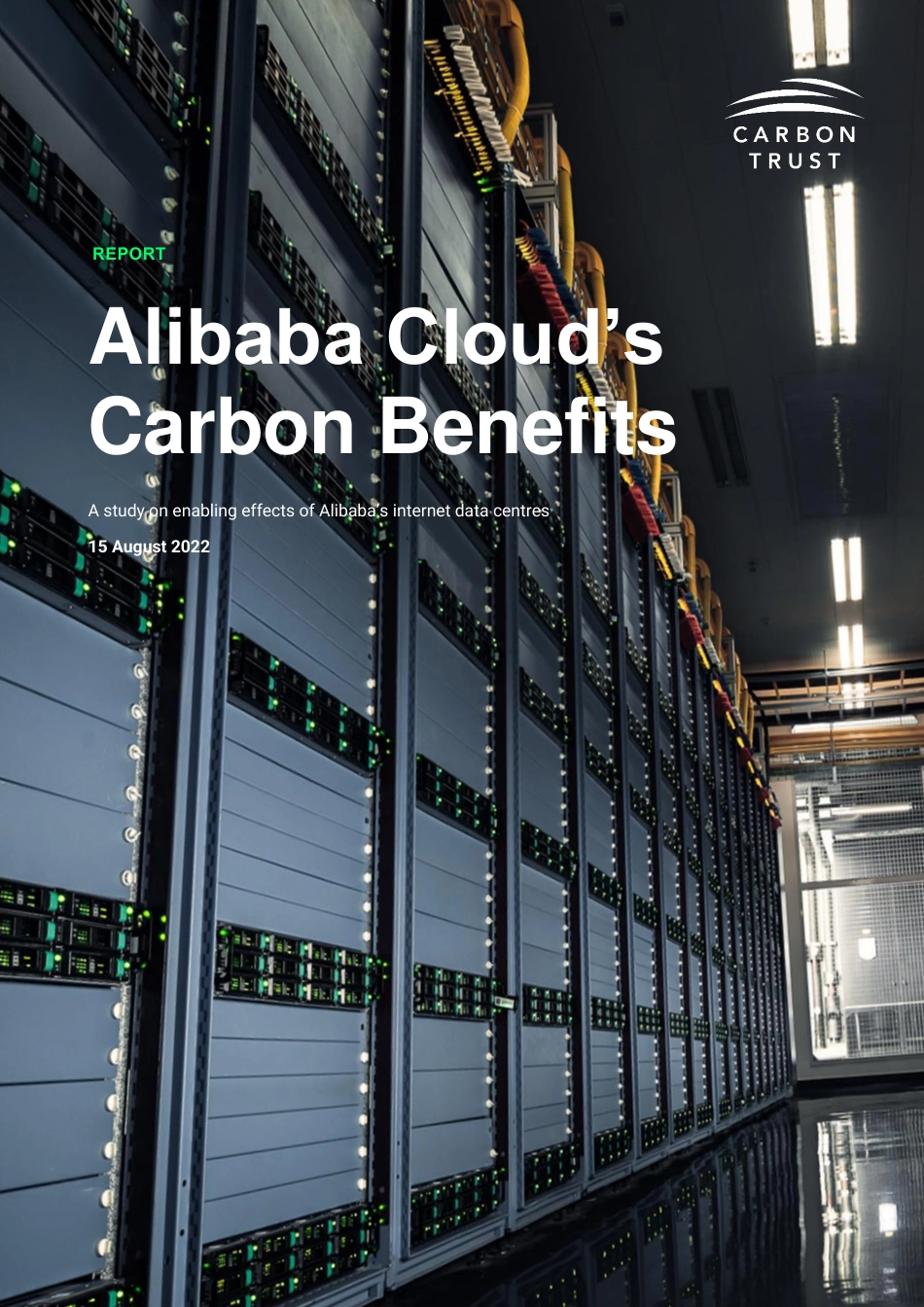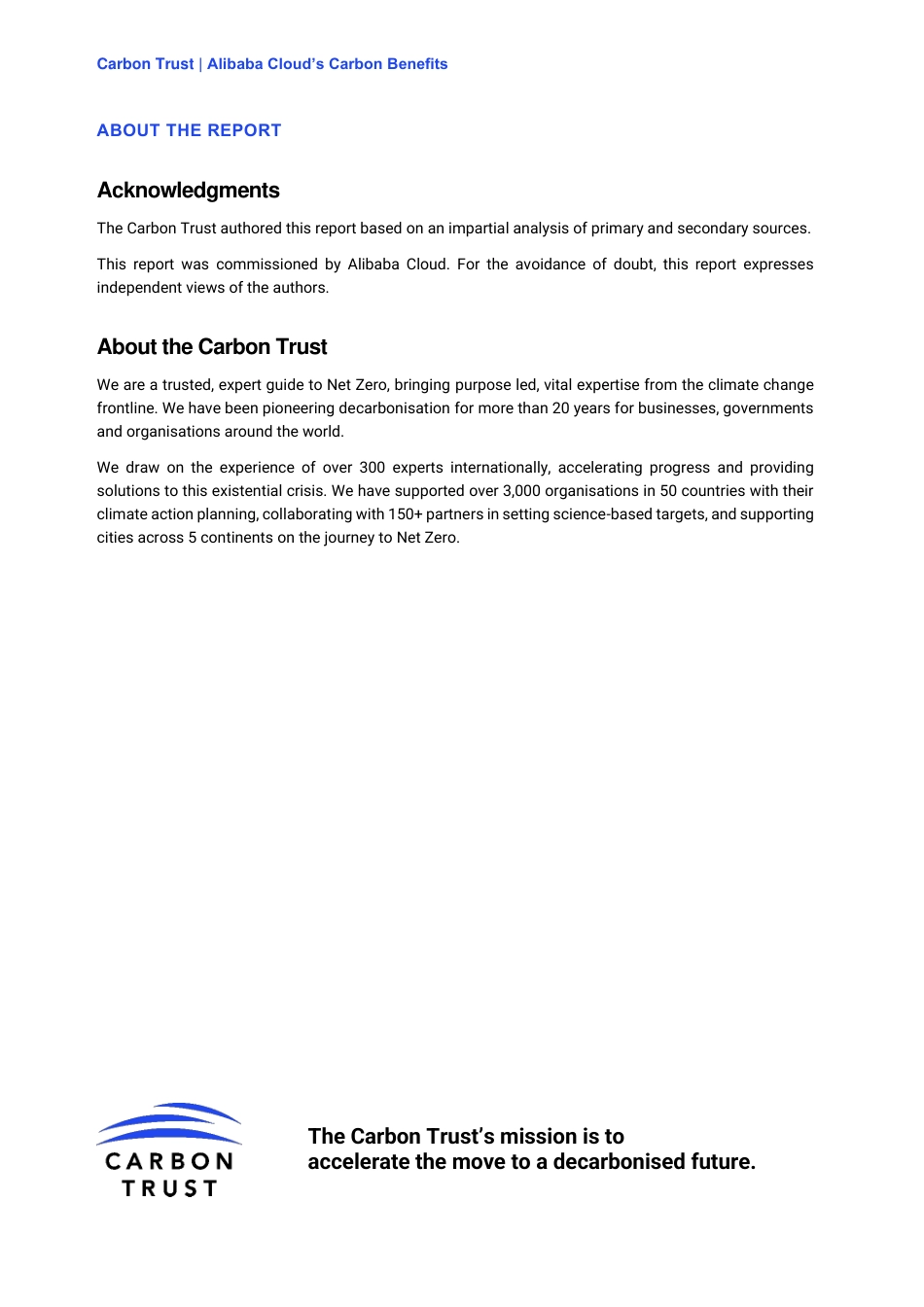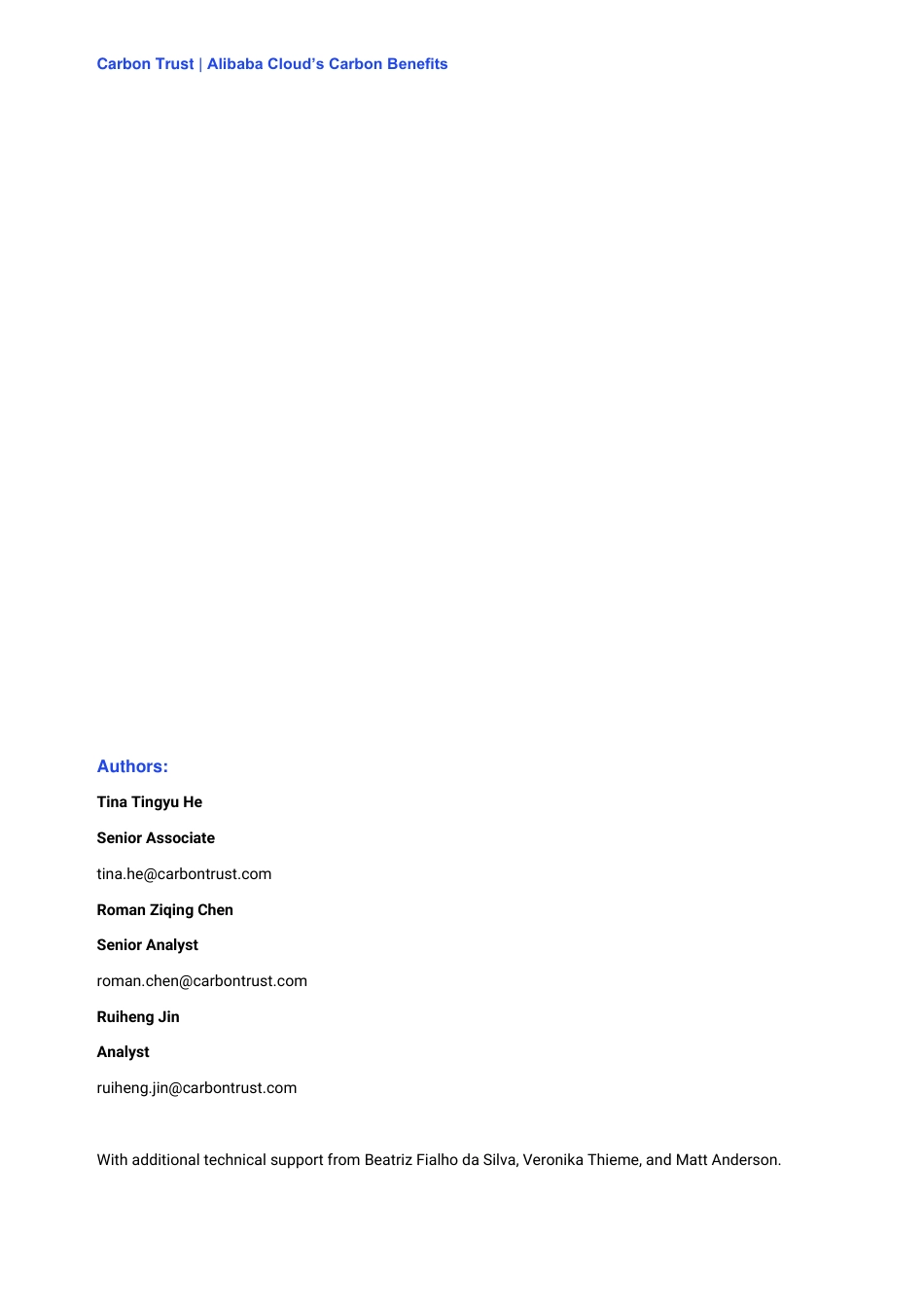REPORT Alibaba Cloud’s Carbon Benefits A study on enabling effects of Alibaba’s internet data centres 15 August 2022 Carbon Trust | Alibaba Cloud’s Carbon Benefits ABOUT THE REPORT Acknowledgments The Carbon Trust authored this report based on an impartial analysis of primary and secondary sources. This report was commissioned by Alibaba Cloud. For the avoidance of doubt, this report expresses independent views of the authors. About the Carbon Trust We are a trusted, expert guide to Net Zero, bringing purpose led, vital expertise from the climate change frontline. We have been pioneering decarbonisation for more than 20 years for businesses, governments and organisations around the world. We draw on the experience of over 300 experts internationally, accelerating progress and providing solutions to this existential crisis. We have supported over 3,000 organisations in 50 countries with their climate action planning, collaborating with 150+ partners in setting science-based targets, and supporting cities across 5 continents on the journey to Net Zero. The Carbon Trust’s mission is to accelerate the move to a decarbonised future. Carbon Trust | Alibaba Cloud’s Carbon Benefits Authors: Tina Tingyu He Senior Associate tina.he@carbontrust.com Roman Ziqing Chen Senior Analyst roman.chen@carbontrust.com Ruiheng Jin Analyst ruiheng.jin@carbontrust.com With additional technical support from Beatriz Fialho da Silva, Veronika Thieme, and Matt Anderson. 1 Contents Contents .............................................................................................................................. 1 EXECUTIVE SUMMARY ...................................................................................................... 4 1. INTRODUCTION ....................



